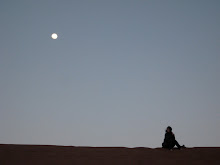Staging Action: Performance in Photography Since 1960
by Patricia MilderMUSEUM OF MODERN ART | JANUARY 28 – MAY 9, 2011
Staging Action: Performance in Photography Since 1960 at the Museum of Modern Art, which features still images of artists performing specifically for the camera, proffers a conservative position with regard to categories of photographic performance documents, which have traditionally been seen as either “documentary” (records of live actions and events) or “theatrical” (performed for the camera). These categories have been uprooted in recent years by art historians and critics, and even by MoMA, which, with its highly visible performance exhibition series and growing collection of performance works in all forms, has a stake in the more contemporary idea that even “documentary” performance photos have art-object quality. Not so, however, in the photography department. The curators (Roxana Marcoci and associate Eva Respini) seem more concerned with presenting only the theatrical variety as a form of art photography.
The inclusion of such works as “Untitled” (1980), by Richard Prince and Cindy Sherman, a double self-portrait in matching red wigs and black suits, reminds me of the criticism RoseLee Goldberg caught back when she included Sherman in her history of performance art; now the photographer’s works are a secure part of the performance art canon without ever having been performed live, and it seems that any photographer who presents his or her visage for the camera can be considered a performer. Lee Friedlander—a photographer whom no one would call a performance artist—is included with a piece called “Tokyo, Japan,” (1994), which shows the artist standing against a white wall with a square of light, presumably from an open window, falling across his face. As with many works in the show, this piece expresses the performative potential of photography, in which the lens and, by implication, we the viewers, are the only audience. It’s a beautiful, meditative image, but had it been in any other show, I would have never imagined it a work of performance art or even a document of a performance. In this context, I suppose I can imagine the man creating the image, the heat of the light on his closed eyes, and perhaps even the time he waited for the shifting natural light to hit just the right location for an ideal shot.
Like the Friedlander, Laurel Nakadate’s “Lucky Tiger” (2009) series and Lorna Simpson’s “May, June, July, August ’57/’09” (2009), which hang next to one another, are also works I would have never expected to find in a show about performance photography. Both play with the conventions of the pin-up and the snapshot, examining them (and women) as objects. Nakadate, in a swimsuit, strikes semi-provocative but mostly coolly staged poses in photos whose surfaces are smeared by the inky black thumbprints of men the artist found on Craigslist. Simpson acts out scenes from vintage black-and-white photos of women in their homes, juxtaposing her new photos with the older ones. These works are as much about images—how they live, how they can be recreated, and how they create meaning—as they are about women. That these contemporary artists’ performances take place only in the realm of images feels like an appropriate, intentional comment, considering the very real fact that human relations are increasingly virtual.
The works in this show by artists actually known for live performance fall into the traditionally understood category of “theatrical” performance documentation—Vito Acconci, Bruce Nauman, Ana Mendieta, and the Viennese Actionists make appearances with work of this kind. However, a photograph of an action by one of these artists that did include a live audience is now, by many accounts, also considered to be an art object in itself. Why were no works of this kind included? In his influential essay “The Performativity of Performance Documentation”(PAJ 84, 2006), Philip Auslander concludes that,
The only significant difference between the documentary and theatrical modes of performance documentation is ideological: the assumption that in the former mode, the event is staged primarily for an immediately present audience and that the documentation is a secondary, supplementary record of an event that has its own prior integrity…this belief has little relation to the actual circumstances under which performances are made and documented.
He goes on to say, “this difference between the images has had no consequence in terms of their iconicity and standing in the history of art and performance.”
With this idea in mind, it’s hard to understand how it serves either of the young and open histories of performance or photography (or even the value of MoMA’s performance photography archives, for that matter) to stage a show based on such conservative ideas. Underlying the curators’ bias against live performance documents is, I believe, actually a very old fine-art photography bias: the idea that studio photography is art and documentary photography is something other than art. The show would have been much more exciting and interesting had it acknowledged or even questioned the confusing but relevant philosophical relationship between traditionally understood categories of photography of performance, instead of propagating old delineations. Auslander asked a question back in 2006 that, if considered even in the slightest, would have added some light to Staging Action: “At the phenomenal level, there is not necessarily any intrinsic way of determining whether a particular performance image is documentary or theatrical. And even if one does know, precisely what difference does that knowledge make?”

No comments:
Post a Comment